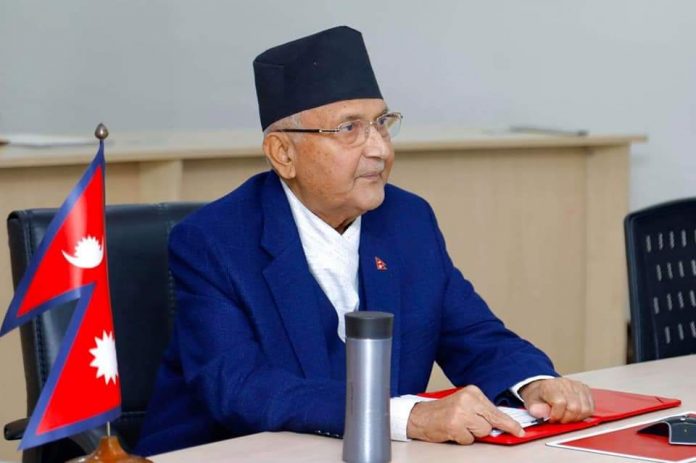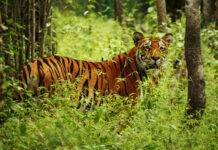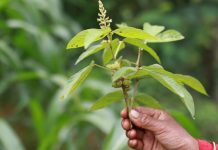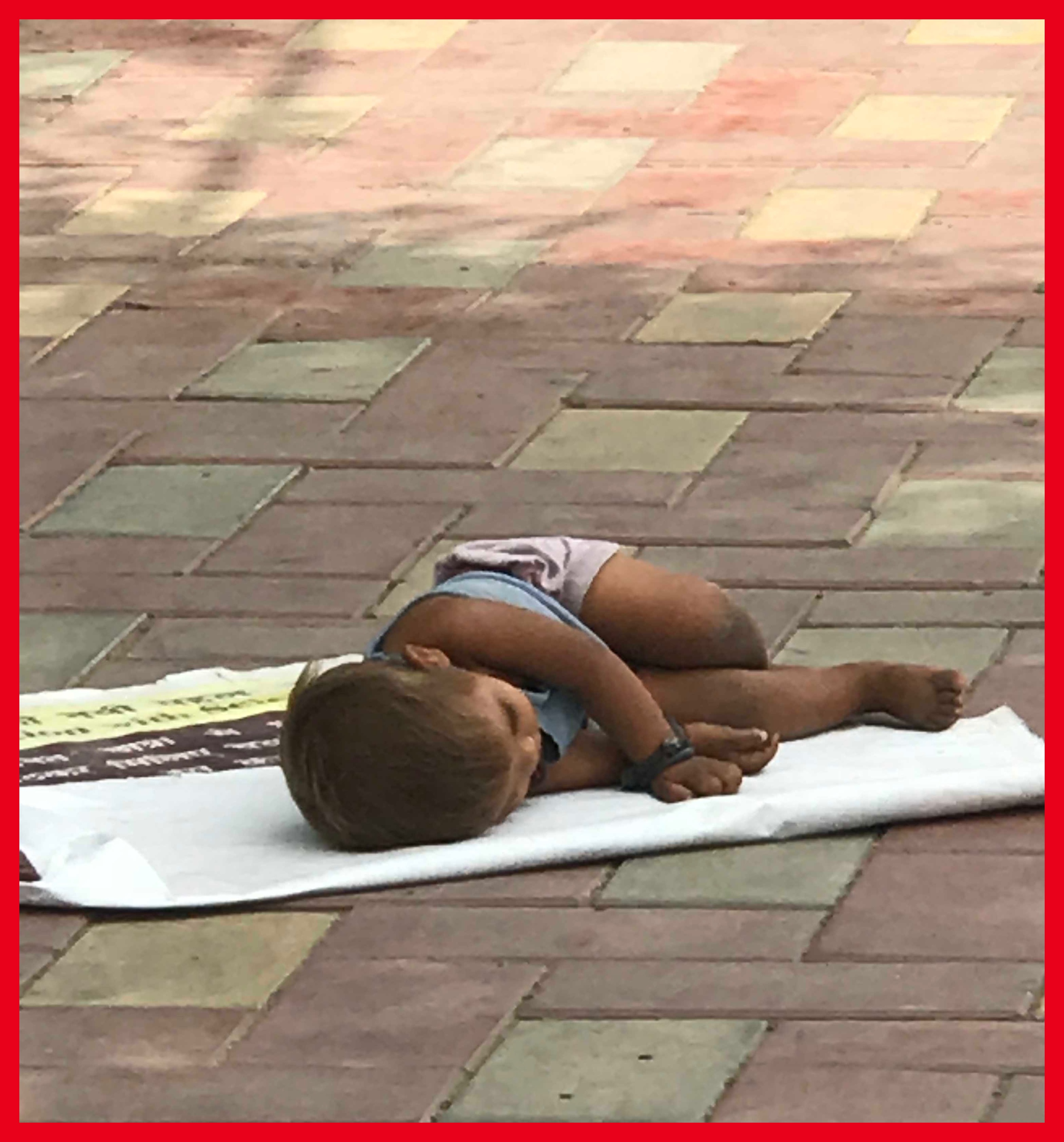Nepal is experiencing a severe coronavirus emergency similar to that of India, with its healthcare system crumbling because of an exponential increase in Covid-19 infections, surging fatality rates and mounting shortages of oxygen and vaccines. There are growing fears that authorities are under-reporting the extent of the virus’ transmission and, coupled with a lack of adequate health facilities in villages, a disaster could be looming.
The second coronavirus wave has been exploding in this landlocked South Asian nation, which has been recording more than 8 000 infections daily since 5 May – an alarming trend for a country of about 29 million people. The single-day total went up to 9 317 on 11 May, and official data from the Ministry of Health and Population suggests that more than 45% of tests conducted are coming back positive. At the peak of the first wave in October last year, Nepal had registered just over 5 700 cases.
Already beset by poor healthcare infrastructure and medical resources, the explosive increase of Covid-19 infections has put further strain on hospitals, with even critically ill patients not finding beds or oxygen support. Humanitarian organisations say most hospitals are not only overwhelmed, with the majority of intensive care unit (ICU) beds and ventilators fully occupied, but also lack essential supplies and trained staff. Doctors say that even young patients require ventilator assistance and they are alarmed that no patient who has been placed on it has recovered from Covid-19 this year.
Global child rights organisation Save the Children says there is also an “alarming” escalation in the number of cases in rural areas, where health facilities are ill-equipped to deal with the influx of critically ill patients. “Someone from a rural part of the country might have to travel seven or eight hours to get to the nearest hospital – many of which are understaffed and under-resourced – and with few ambulances available, life-saving treatment is out of reach for many,” said Jennifer Syed, the country director of Save the Children in Nepal.
Covid-19 infections have also spread to many mountaineers travelling in the Himalayan region in a quest to ascend Mount Everest. More than two dozen climbers have tested positive, including Sherpa guides. As many as 15 climbers had to be airlifted from the base camp of Mount Dhaulagiri, the seventh tallest peak, while 10 others were brought to Kathmandu from Everest Base Camp for treatment after they tested positive.
Nepal’s health ministry has acknowledged that it is losing control of the situation. “If even 20% of the thousands in home isolation require hospital beds and care, it might reach a point where we will not be able to handle it,” said Samir Kumar Adhikari, chief of the ministry’s health emergency operation centre.
Reliance on imports
Sandwiched between China to the north and India to the south, Nepal relies heavily on the latter for the bulk of its imports, particularly medical equipment and oxygen. The country does not have adequate resources to produce its own oxygen, and the authorities have been scrambling to find oxygen and vaccine supplies after Delhi halted supplies because of its own deteriorating situation.
Hospitals are unable to make use of their already inadequate bed capacity owing to the lack of oxygen. A day after several of them published notices asking patients to vacate as they were running out of oxygen, the government ordered private hospitals with 100 beds or more to set up their own oxygen plants within 15 days. It also decided to waive taxes, including customs duty, value-added tax and excise duty, for medical goods such as oxygen cylinders, concentrators and plants. “Nepal is in urgent need of oxygen, plain and simple. Without it, the situation will quickly spiral out of control and the consequences will be catastrophic,” said Syed.
Nepal only has 1 595 intensive care beds, 1 127 ICU beds and 480 ventilators, according to the government’s Covid-19 response plan from May 2020. World Bank data show it also has a doctor shortage with just 0.7 physicians per 100 000 people. The health emergency operation centre said hospital bed shortages existed in 22 of Nepal’s 77 districts by 8 May. Health workers on long-term leave have been ordered to assist and the army has told retired medical personnel to be ready for recall.
The current outbreak in Nepal is being linked to a strain from India. Tens of thousands of Nepalese migrant labourers began fleeing from India across the 1 200km-long porous border following the recent Covid-19 crisis there, bringing highly contagious virus variants with them. Subsequently, Nepal has halted nearly all domestic and international flights and closed most points of entry along the border.
But the migration has continued unabated. The United Nations resident coordinator office for Nepal has said that an inadequate capacity to screen, test and monitor the inflow of returnee migrants at land border points of entry before they travel back to their villages, as well as a lack of community-level surveillance and contact tracing, severely restrict Nepal’s capacity to control the spread of the virus.
The vaccines shortage
Nepal has also experienced vaccine shortages and its vaccination programme was halted after supplies dried up and efforts to procure more hit a wall. Nepal had paid the Serum Institute of India for two million doses of vaccines but received only one million on 21 February. The second batch did not arrive as India faced its own crisis. On 7 March, Nepal got 348 000 doses of Covishield through the World Health Organization-backed Covax programme, which committed 13 million doses to the country.
The United Nations Children’s Fund, which is in charge of supplying vaccines for Covax, is now calling on the G7 countries – Canada, France, Germany, Italy, Japan, the United Kingdom and the United States – as well as the European Union to donate their surplus vaccines to Nepal urgently. The government has also begun inoculating people with Vero Cell, the vaccine developed by China.
Prime Minister KP Sharma Oli, who is facing political turmoil after he lost a vote of confidence in the House of Representatives on 10 May, has faced severe criticism over his handling of the pandemic and is accused of missing a window of opportunity to stem the virus’ spread by allowing public gatherings and international travel despite soaring infection rates.
Nepal began to see an increase in cases early in April, but Oli’s government continued to permit religious festivals, weddings and political rallies. Thousands of Nepalis gathered in the capital from 10 to 12 April to celebrate the three-day Pahan Charhe religious festival, while millions joined Hindu pilgrims at India’s Kumbh Mela event over the same weekend, including the former king and queen, who were later hospitalised after testing positive.
A callous approach
Oli wrote to The Guardian newspaper on 10 May to seek “urgent assistance” from the UK and G7 nations, saying that his country’s healthcare system was “overwhelmed”. He urged the international community to help with vaccines, diagnostic tools, oxygen kits, critical care medicines and equipment. “Nepal’s history is one of hardship and struggle, yet this pandemic is pushing even us to our limits. The number of infections is straining the healthcare system; it has become tough to provide patients with the hospital beds that they need,” he said.
Yet in April, Oli claimed Covid-19 could be treated by gargling with guava leaves. This came after he said Nepalis have strong immune systems because they use a lot of spices.
In a scathing editorial, The Kathmandu Post newspaper called Oli a “coronavirus denier” and said he had “zero tolerance” for the findings of scientific and public health researchers.
“The extent of his denial has ranged from outright dismissal of the virus as a normal flu to the pseudoscientific remedy of turmeric water, and from the potency of the virus to the depth of the crisis,” the newspaper said. “It took 5 000 deaths for him to finally accept that his pseudoscientific claims about the immunity power of the Nepalis made no sense. Ignorance, coupled with arrogance, on the part of the prime minister and his inefficient government cost the nation too dearly.”
Haris Zargar is a journalist from Indian-controlled Kashmir writing on the intersection of politics, conflict and human security. He has worked as a political correspondent based in New Delhi with degrees in Journalism and Development Studies. He is also a researcher looking at land reforms, social movements and armed insurgencies.
This article was first published by New Frame.














